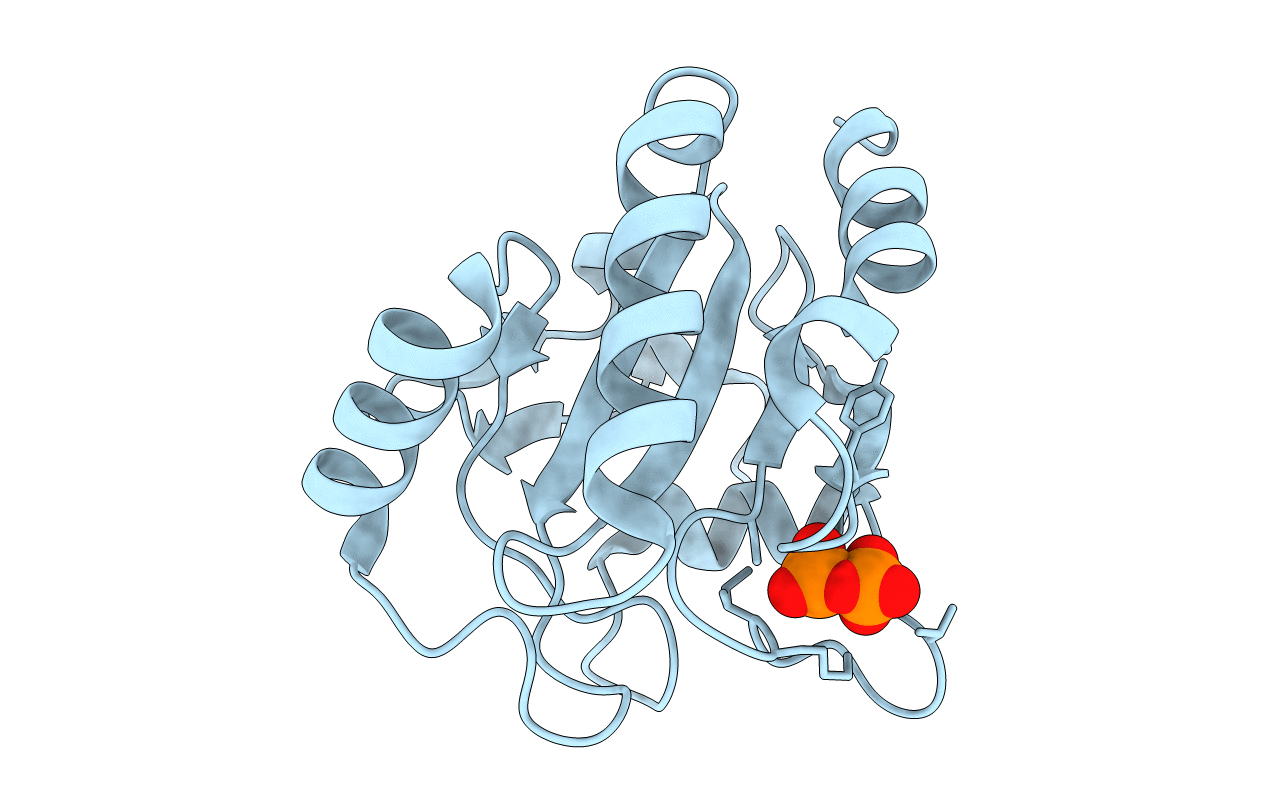
Deposition Date
2009-04-24
Release Date
2009-09-08
Last Version Date
2023-12-13
Entry Detail
PDB ID:
2WGR
Keywords:
Title:
Combining crystallography and molecular dynamics: The case of Schistosoma mansoni phospholipid glutathione peroxidase
Biological Source:
Source Organism:
SCHISTOSOMA MANSONI (Taxon ID: 6183)
Host Organism:
Method Details:
Experimental Method:
Resolution:
1.70 Å
R-Value Free:
0.21
R-Value Work:
0.18
R-Value Observed:
0.18
Space Group:
P 21 21 21


